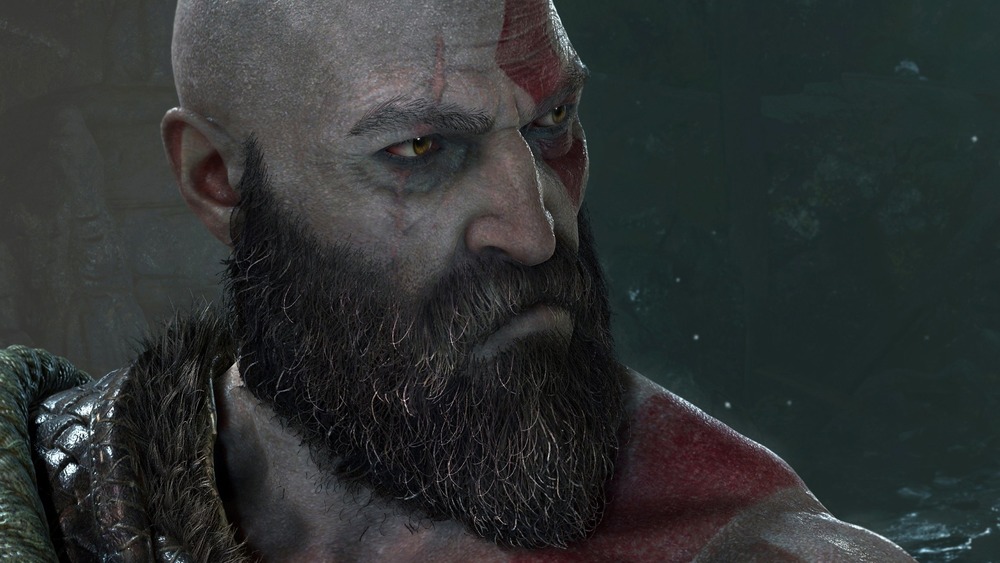What You Didn't Know About The Golden Markers Found Throughout God Of War
Sony Santa Monica's God of War was filled to the brim with all sorts of mythology and symbolism. Previous games in the series focused more the Greek side of things. The most recent entry, however, layered the Norse mythology on thick. Playing through the game, you may have recognized many of the characters you encountered and the names mentioned throughout: Baldur, Freya, Thor, Odin, and so on. As it turns out, though, God of War was hiding a few other secrets that you may or may not have noticed.
From the start of God of War and throughout, Kratos and Atreus encountered golden markers while progressing on their journey. The purpose of these markings was not explicitly stated; instead, that is left for the players to solve on their own. What made the markings so interesting was how Sony Santa Monica was able to tie them into the lore of the game, breathing life into a character who had passed prior to its start. The studio also created the markers for a more practical reason — one that inevitably helped players as they work to reach God of War's end.
The golden markers are part of the story
At God of War's beginning, Kratos chopped down a tree marked with a golden handprint. That handprint belonged to the late Laufey (a.k.a. Faye), Kratos' wife and Atreus' mother. In a way, the handprint marked the beginning of the duo's adventure as they traveled multiple realms (and slayed all sorts of bad guys) on their journey to spread her ashes. But the handprint was not the only gold thing Kratos and Atreus encountered: there were also plenty of golden markers along the way.
In an interview, God of War director Cory Barlog stated that Laufey left these markers so Kratos and Atreus would know where to go. They were pretty tough to miss, and for that reason, they helped ensure the two were always able to stick to the correct path. It really spoke to Laufey's power that, before her death, she prophesied that Kratos and Atreus would embark on this mission together. Her final handprint is discovered in the final moments of the game, right by the cliff from which her ashes were spread. This symbol let the father and son know that they had finally reached the end of their journey.
The golden markers also serve a simple purpose
The golden markers in God of War essentially pulled double duty, however. They weren't just placed for the sake of the story, though many players might appreciate that attention to detail. These markers were also utilized for the benefit of the player. If you completed God of War and saw the end credits, you may have subconsciously attached a purpose to the markers without even realizing it.
Rather than douse every single cliffside in the game with paint, God of War used the golden markers to specifically show where players could climb. They basically served as signs that said, "Kratos can grab onto this ledge and pull himself up."
This is an aspect of game development that a lot of players may not think about — how to use "visual language," as game creators call it, to get those experiencing a title to take certain actions. That Sony Santa Monica was able to tie this visual language into the story, as well, is really just icing on the cake.



